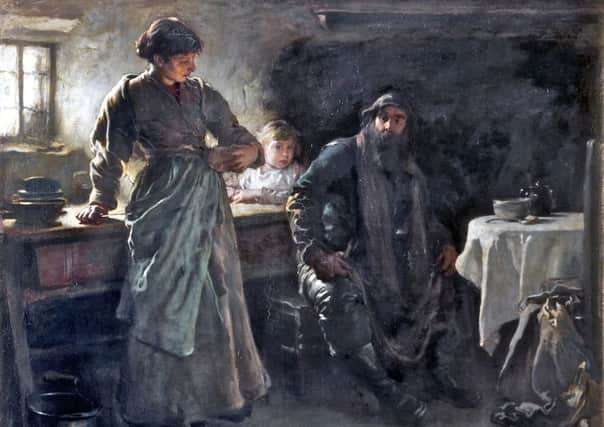Victorian artist who captured lives of working poor


Victorian art has tended to go in and out of fashion but the Mercer Gallery in Harrogate has consistently been a champion of 19th century painting having put on a series of well-received shows celebrating artists and work of that era.
The gallery’s current exhibition is a case in point – Frank Holl: Emerging from the Shadows showcases the work of an artist whose name may not be familiar to many.
Advertisement
Hide AdAdvertisement
Hide AdBorn in London in 1845, Holl created striking large-scale social realist work and later in his career became a much sought-after portrait artist before dying early at the age of just 43. The Mercer show represents the first comprehensive survey of Holl’s work in more than a hundred years and brings together 35 of his major pieces.
“In his lifetime he was fantastically successful,” says curatorJane Sellars. “But because he died young he has been forgotten.” Sellars has long been an admirer of Holl’s since her time working at the Walker Art Gallery in Liverpool which has in its collection Holl’s A Fisherman’s Home. The painting, which features in the Mercer exhibition, depicts a small cottage with three figures – the fisherman and his wife with a small child looking on.
The poverty of the small stone-floored dwelling is evident and the faces of the two adults wear the exhausted expressions of those who have long struggled to survive on very little. It captures the harsh reality of the lives of the poor working class – it is the Victorian equivalent of documentary photography.
“I think what is remarkable about Holl’s social realist work is that it is not sentimentalised,” says Sellars. “You can see that he is empathising with the situation of the people in his paintings. He spent whole summers working in a poor fishing village in Wales. He immersed himself in the lives of those people.” Queen Victoria was a great supporter of Holl and his work and commissioned him in 1870 to capture the hard life of a poor fishing community in the village of Cullercoats. “It is called No Tidings from the Sea and is set in a fisherman’s cottage where the husband has not returned,” says Sellars. In the painting it is clear that the tidings, when they come, will not be good. Another noteworthy work is Newgate: Committed for Trial a heart-rending prison scene portraying two men, about to be led away by a warder, saying farewell to their families. This powerful image first appeared in the newspaper The Graphic, for which Holl provided illustrations, and caught the eye of a certain Vincent Van Gogh who became a fan and collected several of Holl’s prints from The Graphic.
Advertisement
Hide AdAdvertisement
Hide Ad“It was a bit of a risk putting on the show because nobody had heard of Frank Holl,” says Sellars. “But we wanted him to be rediscovered and the response so far from visitors has been very positive. People spend a long time looking at the social realist paintings – they are definitely having a moving effect.”